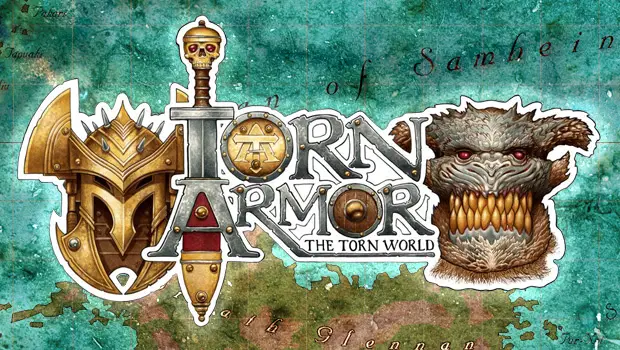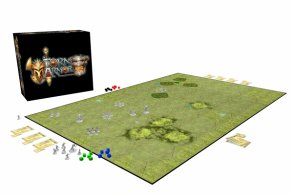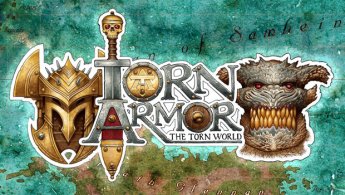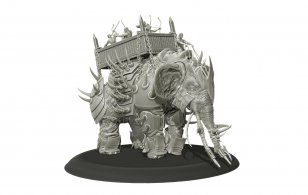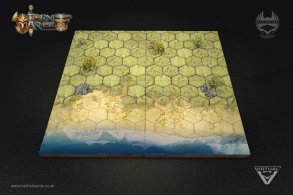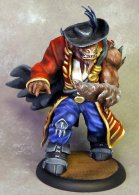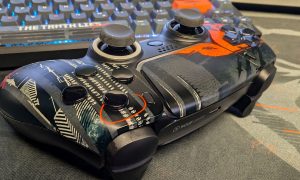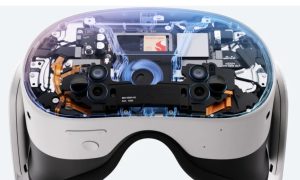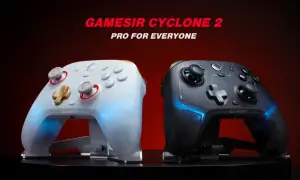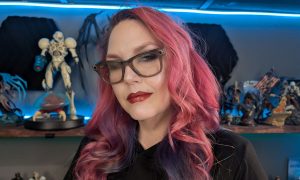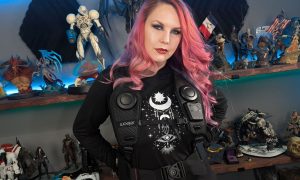
One of my favorite games to play is Heroscape. The way the characters from all different universes, from modern to ancient, fantasy to science fiction, worked surprisingly well. The problem was the fact that it could take a long time to set up and play. Now Heroscape is out of print, but new games are coming out that feature mini-skirmishes that don’t have the complex setup and pre-formed armies so that they can play in thirty minutes. I recently found out about Torn Armor and was able to ask eight questions to Alyssa Faden, creator of Torn Armor.
Recently there has been a lot of discussion on the negative treatment of women in the video game industry. While women have started to make inroads in the board gaming, have you had a difficult time being taken seriously within the industry?
That’s an awesome question, because I get to show our particular industry in a much better light! No, I have never had any difficulty, problems, or adversity in the RPG or boardgaming world. Perhaps there is a slightly different mindset at work. In the computer gaming industry players are separated by many miles, exist to each other only in a virtual sense, and there is a level of disconnect. Add to this the fact that in many instances games are extremely competitive and “smack talk” is common. Even in a game that is entirely male, the testosterone runs high and the bad-mouthing runs rampant. Throw in a woman into the mix – skilled or not – yeah, I’m not sure that the audience is really set up to be receptive to that.
But tabletop gaming and board games are different. We sit at the same table, it becomes a social interaction and a very real experience. People behave differently and I think are therefore more open to any walk of life or gender being at the same table. At the end of the day we – as human beings – are social creatures and we want to get along with others, but insert a microphone, 2,000 miles and a virtual gun in our hands and our behavior changes. I think that is one reason why women have a harder time in the computer gaming industry.
[singlepic id=11451 w=320 h=240 float=right]What are some of your favorite board game influences?
Axis & Allies, Risk Legacy, Descent, Mighty Empires and Last Night on Earth. Axis & Allies I played a lot when I was younger. It’s a fun game, but it taught me that it’s a little like chess and that there are only so many “correct” moves at each stage. This enabled me look for games that are less linear and restricted, so it taught me a great deal. Risk Legacy breaks my brain. Any game that encourages you to tear up game components, write on the board and literally changes the rules as you play is borderline genius. There’s a lot to be learned from that game and it’s truly dynamic and evolving. Descent, particularly the latest iteration, is a great cross-over between RPG and boardgames. I like the customization, the choices, and the simplicity. It’s so accessible and beautifully varied. Mighty Empires I admit is a bit of a dog … you can play that game for days and luck plays too much of a part, but the variable board, the sense of discovery … I love that. Last Night on Earth is stunning. Honestly as zombie games go I see no equal. It’s quick, it’s fun, and it totally plays like a movie. I can’t get enough of that game.
Can you give us a brief overview of what Torn Armor is?
Ultimately there are a lot of great games out there – we doubtlessly own some of them! – but what we wanted was a fantasy squad-based skirmish game: affordable entry point, quick set up, quick game play, coffee-table playing area, fantastic looking miniatures, highly customizable play to fit any playing style, and a rich lore. Torn Armor combines all of these things and so as a package we believe that it is unique and interesting.
When we conceived of this idea we felt that what the market was missing was something that you could easily get into, something accessible, even to a casual gamer, and something that did not require a massive army, lots of money to get into, and lots of time and room to play.
So let’s throw away the rulers and charts, let’s boil this down, and let’s create something that has a small footprint, is quick to set up, comes with everything you need to play in the core box, and can be played in 30 minutes or so.
So here we are: we have a game that you can pick up and play within 20-30 minutes, the rules are very easy to digest, and the gameplay romps along quickly – there’s no half hour pauses between rounds, there’s no need to dedicate 4hrs to gamplay. Invite your friends, go to the local coffee shop if you like, and bang out a few games in less than 2hrs.
But the beauty about it is that it’s expandable: slot on extra battle maps, bring in extra units, double up on the gold value allowed for each side, add in the optional rules. So the game is appealing to casual gamers, but limitless in its expandability, which then appeals to the hardcore wargamers.
How did you come up with the World of Torn, and what are some of its influences?
Strictly speaking I can trace the Torn World back to a Bushido game I was running back in the early 80’s that was based off “The Keep.” I had seen the film, read the book, and wanted to base a scenario off the same storyline. It wasn’t “Torn” then, but a player’s action essentially ended the game in a cataclysmic way when they stubbornly removed the artifact binding the demon to the keep, thus plunging the world into destruction.
[singlepic id=11455 w=320 h=240 float=left]That was fine, because it was a short campaign in one of many systems that we liked to play with, but years later it was back to me to run a game – this time for Dungeons & Dragons – and I had the notion to base it in the same world as the Bushido one years before: to pick up after the demon has been captured/destroyed, but the world itself was beaten up in the process, a little post-apocalyptic.
And this formed the basis for Torn. It is a world in which each Age of Man ends in a cataclysmic event: the fall of a god, the rise of a demon … SOMETHING profoundly world changing. And as the world recovers and enters into a new age, so it finds itself a little weaker than the age before. Technology is lower, magic is less, the understanding of the artifacts from the formers ages is a little lower than it was before.
I wrote and ran in this setting – each campaign advancing the timeline – for many, many years. After a while – when it was a couple of years out from me running again – I had grown a little jaded and wanted to do something drastically different. I developed a concept for a new world and really hammered on it (and to this day it’s really quite, quite unique), but I concluded that it was too alien for players to have fun in, it didn’t have enough of the familiar real world for players to feel grounded. I concluded that they wouldn’t be able to play in it. So I abandoned the idea and went back to Torn.
But now I was full of god-like zeal and I still wanted to re-draw and reshape the old world somehow, breath some really fresh air into it. Which is when it struck me: I smashed my new – alien world – into Torn. They literally collided across a meta-physical level, spun Torn about its axis, and ripped up continents, smashing landmasses into eachother. I literally redrew the entire north hemisphere.
[singlepic id=11449 w=320 h=240 float=left]But the wonderful thing is that the two worlds came to rest touching each other in a physical and meta-physical way. There is a massive area in the world that is a permanent magical storm – this si where the worlds touch – and slowly but surely each world is coming apart.
Torn itself was wounded in the collision and there are areas about the world where planar energies seep through open (invisible) gashes and rifts. But also when the worlds hit each other, they exchanged material: country sized chunks of debris, artifacts AND creatures. Some creatures from Torn ended up in the alien world, some of the unusual creatures form the other world ended up in Torn. That’s literally where the anthropomorphic northern races come from, although they have no idea that they are interstellar refugees.
And so I smashed the whole thing, wrote in a massive cataclysmic event (two worlds smashing into each other), and redrew all the part of the world that didn’t like. The modern Torn World in its current iteration was born. Literally
The “other” world – the one I abandoned due to its alien nature – that has not gone away. The world that crashed into Torn will be visited one day, right?
You have already announced the Maychians and the Sisk. Will other races enter the world of Torn?
We have a production plan out through to the end of 2014 as it stands and limitless possibilities beyond that. I want to immediately expand on the two core factions by adding additional units and variations, so you can field elite hoplites, or militia mu, that type of thing: really broaden and deepen the possibilities and options. I want to expand certain races to the point where you could field an entire vanaran army if you wanted to!
And then I want to get into the other factions: the Kyukoku samurai elves, the heavy knights and shock dwarves from Druath Glennan, the innumerable undead hordes from the Valley of the Lich King, the desert tribes of Topec, and even *whatever* lies in that other alien world over there. :)
Have you been involved with any other Kickstarter projects before this one?
Indirectly I have had the pleasure of being involved in several other kickstarters, the most recent of which was the Center Stage Miniatures Torn World miniatures line dubbed “Twisted Fairytales.” Publicly I believe it was seen as a success and it funded well beyond the initial goal, but behind the scenes there were things to be learned about how the Kickstarter was run, project updates, the structure of the rewards and stretch goals. While having the two kickstarters running back to back I think caused a little confusion among our audience, in the long run it was invaluable experience and enabled us to Approach Torn Armor with a clear vision for how things should be run.
[singlepic id=11452 w=320 h=240 float=right]Why did you decide to publish this yourself instead of using a publisher?
I suspect that publishers are approached ad infinitum about new games, some good, some less so. They must be somewhat jaded. I didn’t want to be just another voice offering up an idea for a game, I wanted to make it happen and that means taking things into my own hands. Now I become the master of my own destiny. I much prefer that and I believe that my experience in running small companies and as a production director lends itself well to the business side of things.
I am not opposed to a publisher taking on the game at a later stage, but this is something that I knew we could make happen now, we could generate interest now, and that in turn would be proof enough to publishers and distributors that Torn Armor has legs and brings something unique to the genre.
Will we be seeing Torn Armor in local game stores, and if so, when?
Oh yes, for sure. We have several retailers already backing the project, so they will get to put the boxes on shelves at the end of 2013 in time for the Holiday season. We are also talking to two large distributors and while talks are still in the works, it should mean that in early 2014 most gaming stores are carrying Torn Armor.
The Kickstarter is almost finished at the time of this posting, but you can still find out more information about Torn Armor there. Hopefully everything will work smoothly for an early 2014 release.
While not working as a Database Administrator, Keith Schleicher has been associated with Gaming Trend since 2003. While his love of video games started with the Telestar Alpha (a pong console with four different games), he trule started playing video games when he received the ill-fated TI-99/4A. While the Speech Synthesizer seemed to be the height of gaming, eventually a 286 AT computer running at 8/12 Hz and a CGA monitor would be his outlet for a while. Eventually he’d graduate to 386, 486, Pentium, and Athlon systems, building some of those systems while doing some hardware reviews and attending Comdex. With the release of the Dreamcast that started his conversion to the console world. Since then he has acquired an NES, SNES, PS2, PS3, PSP, GBA-SP, DS, Xbox, Xbox 360, Xbox One S, Gamecube, Wii, Switch, and Oculus Quest 2. While not playing video games he enjoys bowling, reading, playing board games, listening to music, and watching movies and TV. He originally hails from Wisconsin but is now living in Michigan with his wife and sons.

See below for our list of partners and affiliates:
